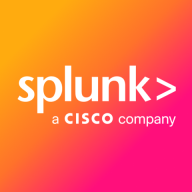

Splunk Enterprise Security and SAP IT Operations Analytics compete in IT management and analytics. Splunk shows strength with advanced security features, whereas SAP offers comprehensive analytics for IT operations.
Features: Splunk Enterprise Security offers comprehensive threat detection, advanced incident response, and robust security management. SAP IT Operations Analytics provides detailed IT operational insights, system health monitoring, and performance optimization tools.
Ease of Deployment and Customer Service: Splunk adapts to diverse environments with a strong support system. SAP can be complex during setup but offers thorough support for deployment intricacies.
Pricing and ROI: Splunk Enterprise Security involves significant setup costs, with ROI linked to its extensive security capabilities. SAP IT Operations Analytics requires considerable initial investment, justified by its detailed operational insights, potentially offering better long-term ROI for IT operational efficiency.


Splunk Enterprise Security is widely used for security operations, including threat detection, incident response, and log monitoring. It centralizes log management, offers security analytics, and ensures compliance, enhancing the overall security posture of organizations.
Companies leverage Splunk Enterprise Security to monitor endpoints, networks, and users, detecting anomalies, brute force attacks, and unauthorized access. They use it for fraud detection, machine learning, and real-time alerts within their SOCs. The platform enhances visibility and correlates data from multiple sources to identify security threats efficiently. Key features include comprehensive dashboards, excellent reporting capabilities, robust log aggregation, and flexible data ingestion. Users appreciate its SIEM capabilities, threat intelligence, risk-based alerting, and correlation searches. Highly scalable and stable, it suits multi-cloud environments, reducing alert volumes and speeding up investigations.
What are the key features?Splunk Enterprise Security is implemented across industries like finance, healthcare, and retail. Financial institutions use it for fraud detection and compliance, while healthcare organizations leverage its capabilities to safeguard patient data. Retailers deploy it to protect customer information and ensure secure transactions.
We monitor all IT Operations Analytics reviews to prevent fraudulent reviews and keep review quality high. We do not post reviews by company employees or direct competitors. We validate each review for authenticity via cross-reference with LinkedIn, and personal follow-up with the reviewer when necessary.